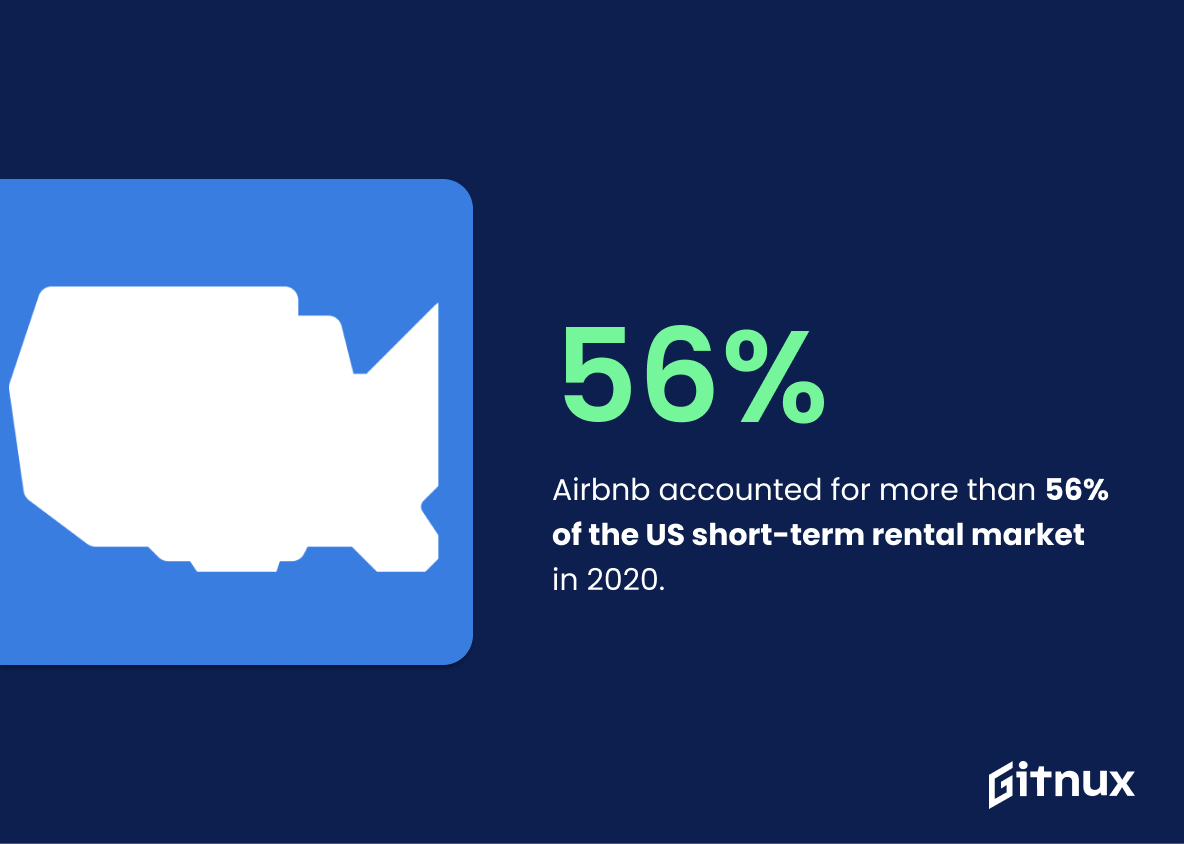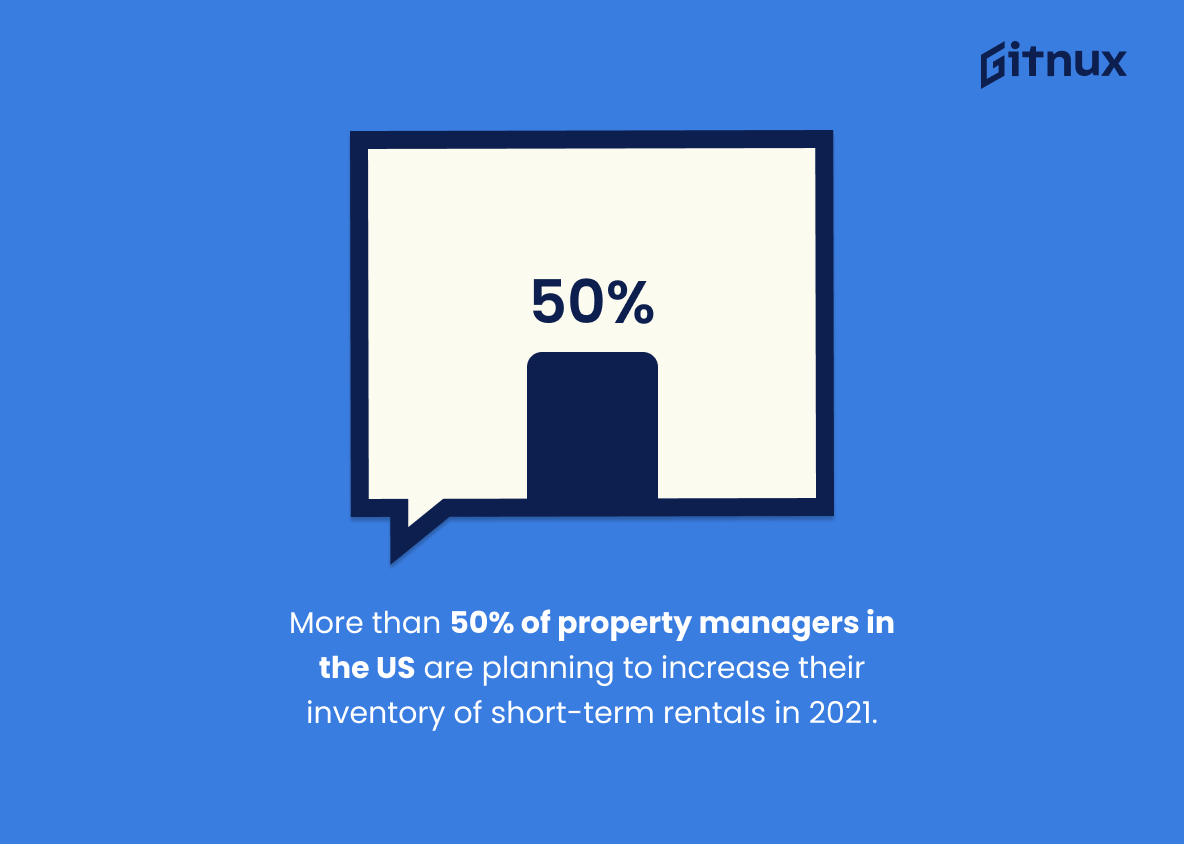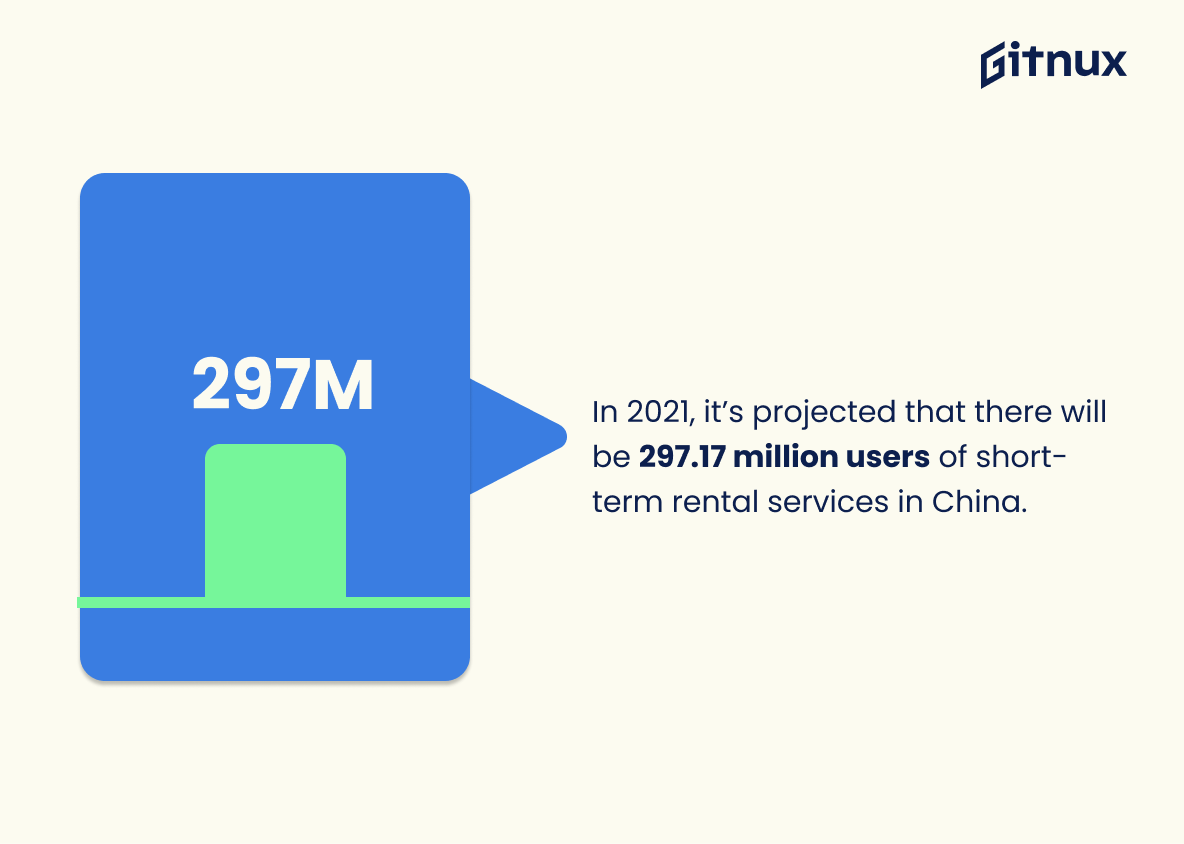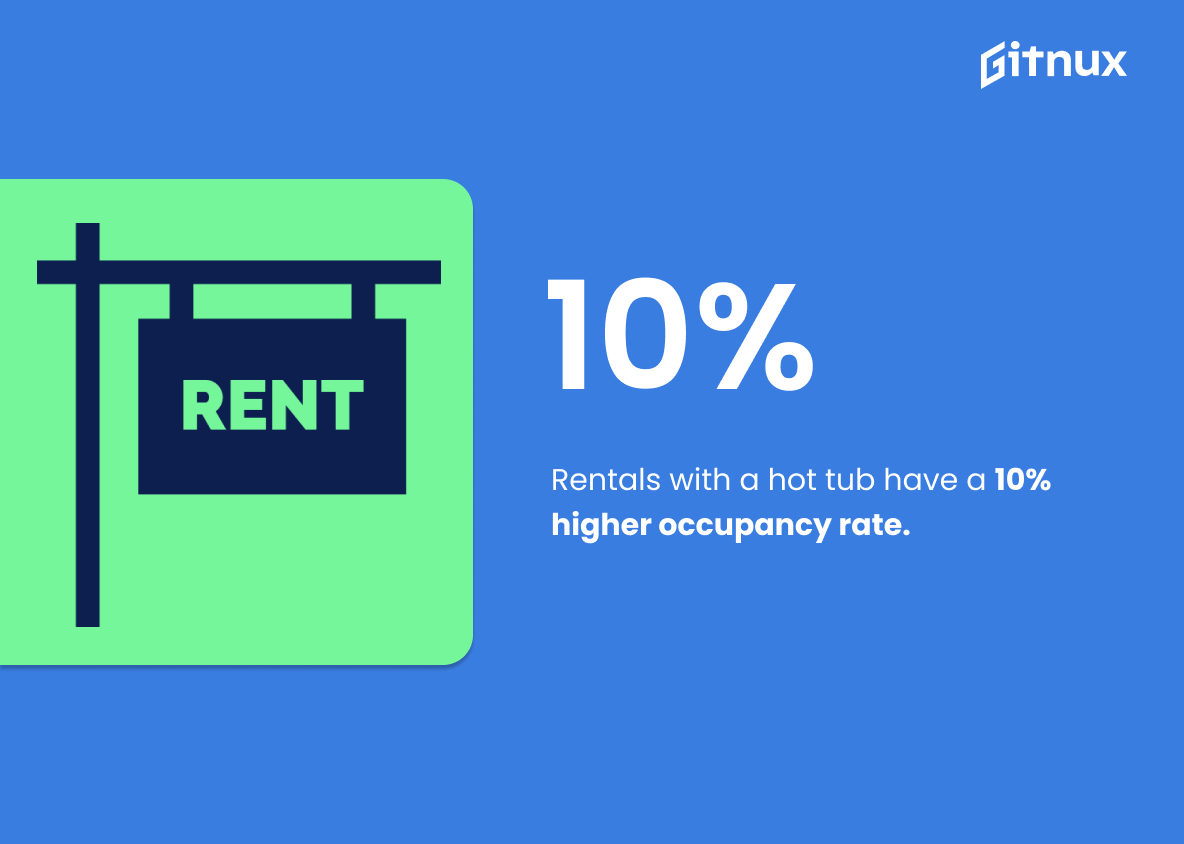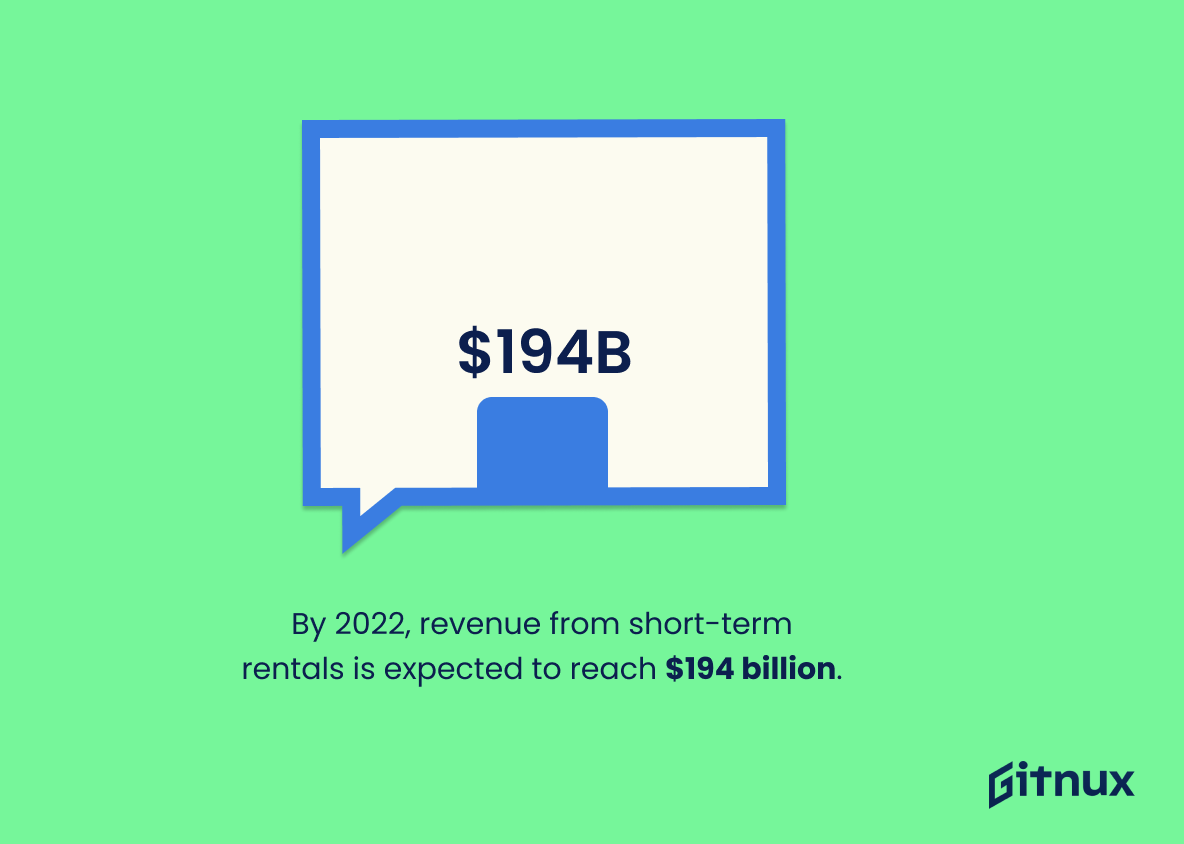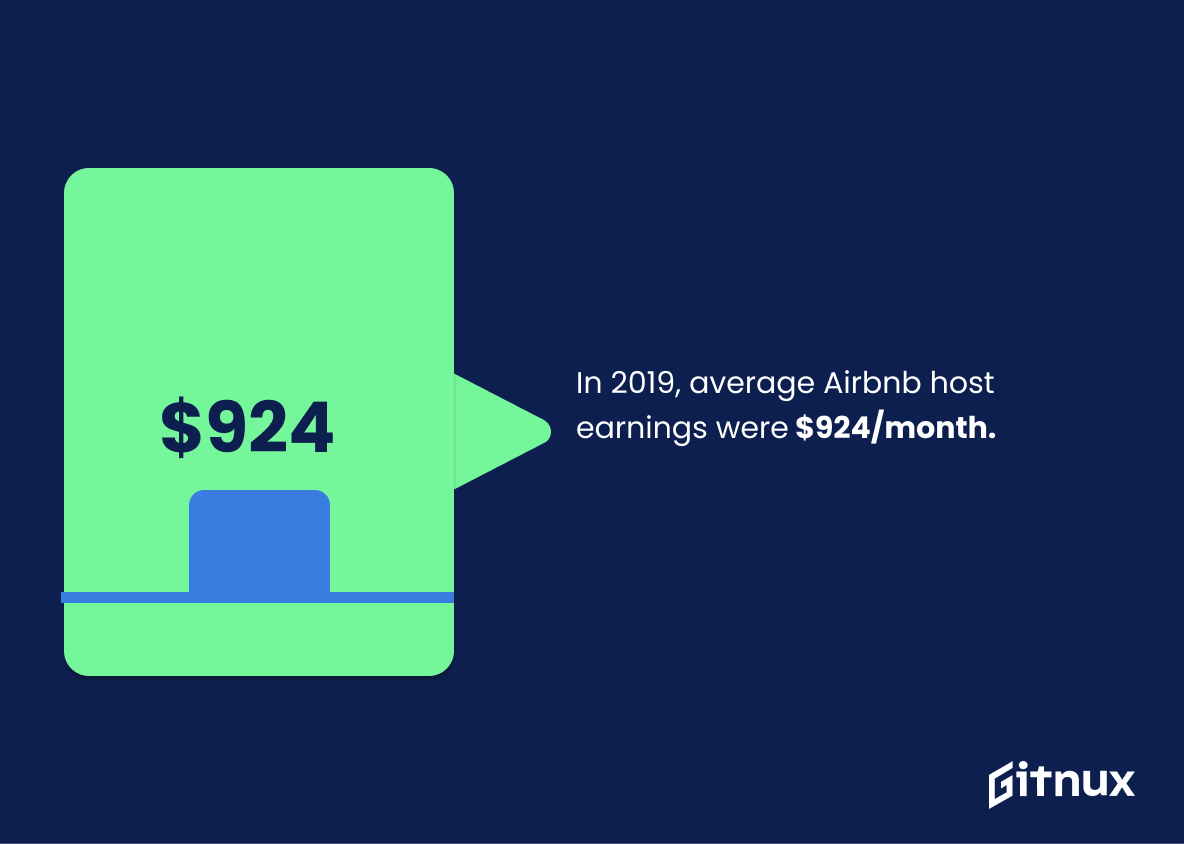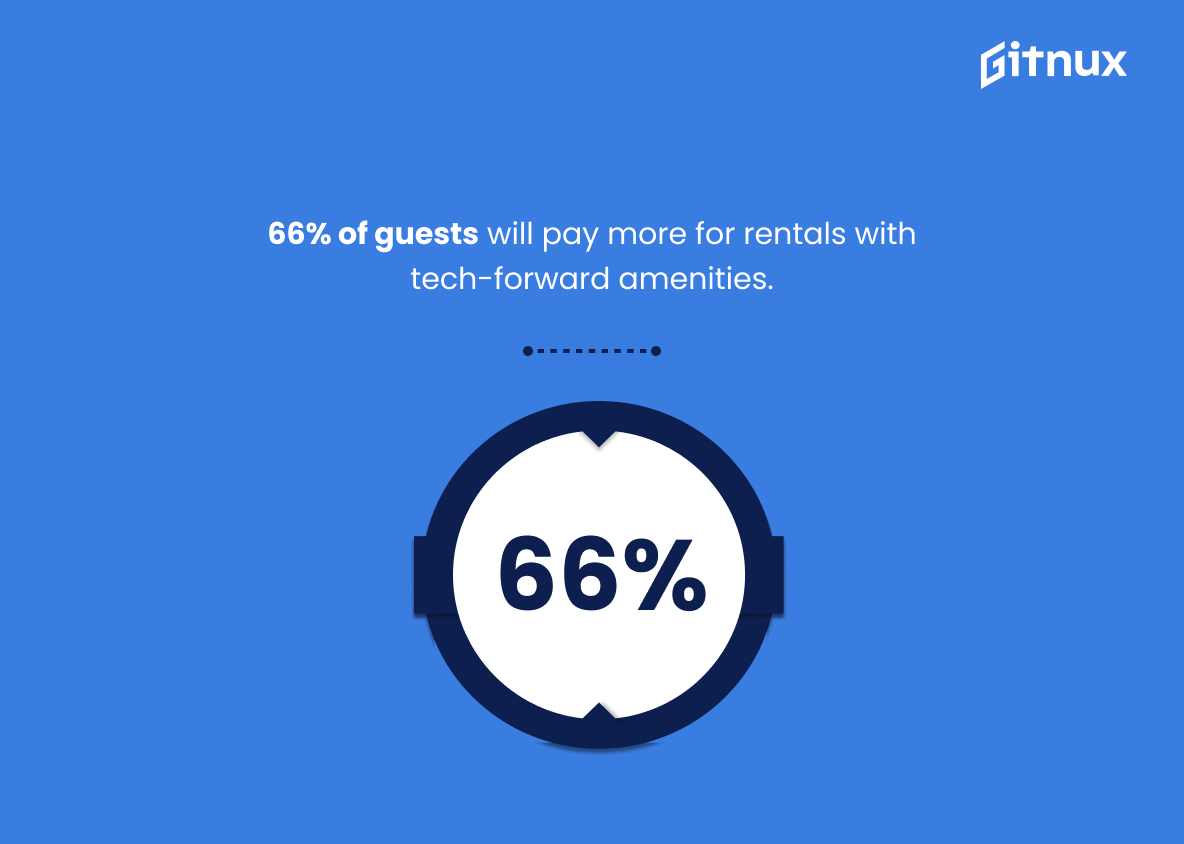Nestled in the dynamic ecosystem of the real estate industry is the flourishing sector of short-term rentals. A concept that fueled the meteoric rise of global giants like Airbnb, this temporary lodging option has revolutionized the way we travel and live. In this blog post, we dive knee-deep into the intriguing world of short-term rental industry statistics.
Whether you are a property owner, an investor considering a plunge into this terrain, or simply a curious reader, these insights will offer a profound understanding of the sector’s current performance, growth trajectory, and the potential opportunities lying ahead in the landscape. Hold on to your seats as we embark on this insightful exploration.
The Latest Short Term Rental Industry Statistics Unveiled
Airbnb accounted for more than 56% of the US short-term rental market in 2020.
In the pulsing heart of the short-term rental industry, we see Airbnb firmly lodged, controlling more than half of the US market in 2020. As a key player in this industry, Airbnb has well marked its territory, stamping its influence over the vast 56% share.
A king on its throne, it affects every tide and wave of the industry, and significantly impacts the business strategies of both its competition and aspiring startups. Its noteworthy dominance paints a vivid picture of the current trends, consumer preferences and overall industry trajectory, making it an invaluable reference point for all stakeholders.
More than 50% of property managers in the US are planning to increase their inventory of short-term rentals in 2021.
Delving into the heart of the short-term rental industry, one gets a visceral feel of its pulsating dynamics when confronted with the revelation that a lion’s share, over 50%, of US property managers express intentions to increase their short-term rental inventory in 2021. What unfolds before us is not just an individual business decision, but a collective wager on the industry’s trajectory.
This prediction signifies a strong surge in the availability of short-term rentals, as well as an anticipated rise in demand, trends that traverse beyond the real estate market to touch on economic, social, and even urban planning spheres. These ripple effects, reverberating through related sectors, emphasize the importance of this particular statistic for anyone keenly scrutinizing this ever-evolving industry.
The Airbnb user base in 2019 reached 60 million, showing the popularity of short term rentals.
Reflecting on the thriving demand of short-term rentals, a staggering 60 million users were drawn towards Airbnb in 2019 alone. This phenomenal figure is a testament to the seismic shift in accommodation preferences. It highlights a flourishing appetite for more homely, unique stay experiences over conventional hotel visits.
Furthermore, it underscores the potential of such platforms to cater to the vast population – leveraging this infiltration in the market, aspiring entrepreneurs can gain vital insights into consumer behavior. This statistic shines a torch on the growth trajectory and future potential the Short Term Rental Industry holds.
In 2021, it’s projected that there will be 297.17 million users of short-term rental services in China.
Imagine the short-term rental industry as a vast ocean, teeming with potential, thriving on adaptability and constantly shaping global economic currents. In this ocean, one colossal whale that business strategists cannot ignore is China, poised to project around 297.17 million users of such services in 2021. This astounding number is not only a glimpse into China’s roaring market demand, it illuminates a plethora of opportunities for business growth and expansion.
It also paints a picture of a shifting lifestyle trend favoring flexible living arrangements and a community yearning for a taste of different lifestyles. Therefore, this insight invites industry leaders and aspiring entrepreneurs to tap into this nerve center of innovation, fostering product refinements while harnessing new-age solutions that resonate with the demands of the Chinese market.
44% of guests prefer short-term rentals to traditional hotels.
By illustrating that almost half of guests are developing a preference for short-term rentals over traditional hotels, we are revealing a tectonic shift within the tourism and travel industry. There’s an undercurrent of revolution that’s redefining the tastes of travelers.
This marks a crucial pivot point highlighting the growing strength and appeal of the short-term rental market. As such, it serves as an illuminating beacon for investors, industry professionals, and innovators to tap into this expanding sector, spark new opportunities, and drive further growth.
Rentals with a hot tub have a 10% higher occupancy rate.
Dipping your toes in the intriguing world of short term rental industry statistics, there lies a sizzling revelation—the indication that rentals boasting a hot tub enjoy a 10% higher occupancy rate. This titillating tidbit serves as a roadmap for potential and current property owners, highlighting the benefits of investing in deluxe amenities.
Essentially, it’s the proof in the pudding that residents are willing to pay a premium for a dash of luxury, a relaxed vibe and the chance for a memorable staycation. Like a compass guiding strategic decision making, this statistic points towards increased profitability and customer satisfaction, reaffirming the theory that the simple addition of a hot tub can elevate a property from simply good to irresistibly inviting.
By 2022, revenue from short-term rentals is expected to reach $194 billion.
Peering not too far into the finance crystal ball of the short-term rental industry, a glittering prediction emerges: an anticipated revenue gain soaring to an impressive $194 billion by 2022. This arresting figure is not just a testament to the industry’s potential profitability, but it evidences the explosive growth and transformative power of short-term rentals in the global real estate market.
This projection suggests a paradigm shift, a changing accommodation preference that veers towards temporary lodging offering convenience, budget flexibility, and unique living experiences. In essence, this anticipated surge in revenue paints a promising landscape for industry players, both established and emerging, while inferring critical insights for investors, market strategists, and policy makers alike.
The average daily rate for a short-term rental in North America in 2018 was $217.
Referring to the stated benchmark figure of an average daily $217 rate for short-term rentals in North America in 2018 unearths a deeper insight into the robust health of the industry during that particular year.
This powerful number provides concrete data to ground discussions around profitability, market trends and investment potential in the short-term rental industry. In effect, it offers readers an objective measure of the potential return on investment in the sector, influencing decisions of both current industry stakeholders and potential new entrants.
In 2019, average Airbnb host earnings were $924/month.
Peering into the financial heart of the short-term rental industry, the 2019 statistic of Airbnb hosts pulling in an average of $924/month paints a vivid narrative. It underscores the growing viability of the platform as a significant income source, and not just a hobby for homeowners. The figure gives a quantitative portrait of a thriving market that in recent years has transformed the traditional hospitality sector.
Not only does it illuminate the earning potential within the domain, but it also offers a benchmark for both present and future hosts trying to gauge their own performance and potential profitability. Furthermore, it provides critical context for investors and policymakers tackling issues within the short-term rental economy. Therefore, it is a key piece of the puzzle in understanding the broader landscape of the short-term rental industry.
66% of guests will pay more for rentals with tech-forward amenities.
In an ever-evolving digital world, technology serves as a driving force in almost every industry. For those in the short-term rental market, knowing that two-thirds of guests are willing to shell out extra for rentals brimming with tech-savvy comforts can be a game-changer. It’s a profound insight, revealing the potential profitability and customer appeal of integrating smart devices or high-tech features into their rentals.
This could spark a tech revolution in the short-term rental industry, propelling landlords to augment their spaces with advanced amenities, thereby enhancing the guest experience and driving up rental prices. Indeed, this nugget of statistics paves the way for transformational strategies in enhancing guest satisfaction while providing a unique selling point that pulls in an impressive Return On Investment.
Millenials and Gen Z are the leading generations that book home rentals, with approximately 67% of the total bookings.
Mapping the behaviors of various consumer demographics is crucial for the success of any industry. In the realm of the Short Term Rental Industry, understanding that Millennials and Gen Z constitute approximately 67% of total bookings is indeed momentous. This nugget of information spotlights the generational preferences, suggesting that these younger generations are the driving forces behind the growth and vitality of home rentals. Hence, the industry can tailor their marketing strategies, rental offerings, and services to cater specifically to these generational cohorts, thereby securing a significant market share.
Moreover, it provides valuable foresight on future trends, considering this preference may persist or even intensify as these generations mature and their purchasing power rises. Thus, being attentive to such statistics is like having a finger on the pulse of the controlling demographic of the short-term rental market.
The average stay in a vacation rental pre-COVID-19 is 6.6 days.
Delving into a statistic like ‘The average stay in a vacation rental pre-COVID-19 being 6.6 days’ offers a versatile slice of knowledge, a key to understanding industry trends and customer behavior in the dynamic landscape of short term rental market. It sneaks us into the pre-pandemic era, throwing light on the patterns enjoyed by consumers, thereby establishing a crucial comparing element to build our perceptions of ongoing shifts triggered by world events.
It serves as an anchor point to navigate how the pandemic-eventful sea has stirred the calm waters of rental duration preferences. So, it isn’t merely a number, but a narrative on its own, weaving the story of an industry’s past, present, and potentially its future path.
In 2020, the median revenue for full-time rural hosts on Airbnb was about $8,448.
Delving into this captivating number, the median revenue of $8,448 for full-time rural hosts on Airbnb in 2020, we uncover a riveting facet of the Short Term Rental Industry. It serves as a key indicator, revealing the economic potential lying within more remote, less urbanized areas contrary to the popular perception that thriving short-term rental markets are primarily anchored in buzzing city centers.
This revelation is especially intriguing as it diversifies the geographical dynamics of this industry, opening avenues for property owners in countryside locales to tap into a lucrative source of income. Furthermore, it highlights Airbnb’s reach and impact, extending beyond urban landscapes into the tranquil expanses of rural areas. In essence, this single piece of data among a myriad of numbers in a seemingly vast industry, casts light on the profitability and versatility the Short Term Rental industry beholds, painting an enriched and comprehensive picture for interested readers.
Nearly 90% of vacation rentals will provide a full refund upon cancelation due to the global COVID-19 pandemic.
In a dynamically changing global environment brought about by the COVID-19 pandemic, the vast majority of vacation rentals, nearly 90% to be precise, are demonstrating resilience and flexibility by offering full refunds upon cancelation. This is a silver lining for industry growth as it minimizes the financial risk for travelers, eliciting a sense of security and confidence in potential customers.
With this approach, short-term rental industry is reinforcing consumer trust, which is key to the industry’s sustainability and recovery in post-pandemic times. Moreover, this policy sends a strong signal to marketplace competitors, suggesting a shift towards more consumer-centric strategies. Therefore, it could set a new benchmark and significantly impact future business practices in the short-term rental industry.
In 2020, bookings in rural areas grew faster than in urban settings with an increase of 25%.
Highlighting the upsurge in rural area bookings by 25% in 2020 offers a fresh perspective on the lucrative avenues within the short-term rental industry. This shift in traveler preferences for non-urban locations potentially signifies a transformative trend in the market, a golden nugget for stakeholders. Vacation rental owners, property managers, and investors could reap significant benefits by turning their sights toward rural properties, thereby broadening their portfolios and yielding higher returns.
Additionally, it sketches out new possibilities for market expansion and diversification in this unanticipated direction, shattering the urban-centric conventions. Finally, this data point can also serve as a springboard for exploring the reasons behind such a change, like the rise of remote work, casting light on the industry’s dynamics in the post-pandemic era.
In 2019 destinations in Asia Pacific recorded the highest growth in short-term rentals, with the sector generating $14.5 billion.
This significant upward trend in Asia Pacific’s short-term rentals in 2019 paints a vibrant picture of a booming industry, steadily gaining momentum. With the sector drumming up a staggering $14.5 billion, it highlights the region as a thriving hot-spot for short-term rentals. Including this statistic not only lends credence to the potential profitability in this market, but also signals to potential investors and property owners where the industry pulse is currently booming.
It nudges them to focus their attention and resources in a region which is currently teeming with lucrative opportunities. Essentially, this figure serves as a compass directing industry participants towards potential growth areas in the short-term rental landscape.
As of January 2021, there were an estimated 5.6 million active Airbnb listings worldwide.
Highlighting the figure of 5.6 million active Airbnb listings worldwide as of January 2021 underlines the astounding global reach and popularity of Airbnb in the short-term rental market.
This hefty number serves as a testament to Airbnb’s significant role in shaping the industry trends, setting rental standards, and influencing consumer behaviors. In the realms of the short-term rental universe, this spectrum-spanning presence of Airbnb acts as a barometer, detailing the industry’s growth rate, geographical reach, and economic impact.
Among the reasons for booking short-term rentals, 37% of U.S. respondents in a recent survey stated that living like a local was a major factor.
Unpacking this intriguing statistic, it signifies a rising trend in the short-term rental industry, where a substantial percentage, 37% of U.S. respondents, are driven by the desire to live like a local. This underlines a significant shift in the mindset of travelers who are gradually looking beyond just a place to rest whilst on their journey.
They are seeking an authentic, homely experience that helps them connect better with the destination’s culture and way of life. Thus, the short-term rental industry is not just a service anymore – it’s an immersive lifestyle choice. Highlighting this finding could steer marketers and property owners to curate offerings that cater more directly to this substantial group, ultimately helping to shape the future direction of the industry.
Conclusion
In an ever-evolving and highly competitive sector like the short-term rental industry, it is essential to keep one’s finger on the pulse of current trends. The statistics we’ve examined in this blog post serve as a valuable insight into the performance, potential, and challenges facing the industry, and they also highlight the growing demand for more flexible and personalized accommodation options.
As we move forward, understanding these numbers and maneuvering strategies accordingly would be vital for businesses aiming to solidify their foothold and seize a competitive advantage within this dynamic marketplace. Regardless of the occasional setbacks, the short-term rental industry is persistently expanding, demonstrating its resilience and innovative spirit. It continues to embody an exciting frontier for property owners, investors, and guests alike.
References
0. – https://www.www.businessinsider.com
1. – https://www.ipropertymanagement.com
2. – https://www.www.globenewswire.com
3. – https://www.www.vrmintel.com
4. – https://www.www.mashvisor.com
5. – https://www.www.statista.com
6. – https://www.rentalsunited.com
7. – https://www.www.thewisemarketer.com
8. – https://www.news.airbnb.com
9. – https://www.blog.turnkeyvr.com
10. – https://www.www.emyth.com
11. – https://www.www2.deloitte.com
12. – https://www.www.theregreview.org
13. – https://www.www.propertyware.com
14. – https://www.www.matterport.com
